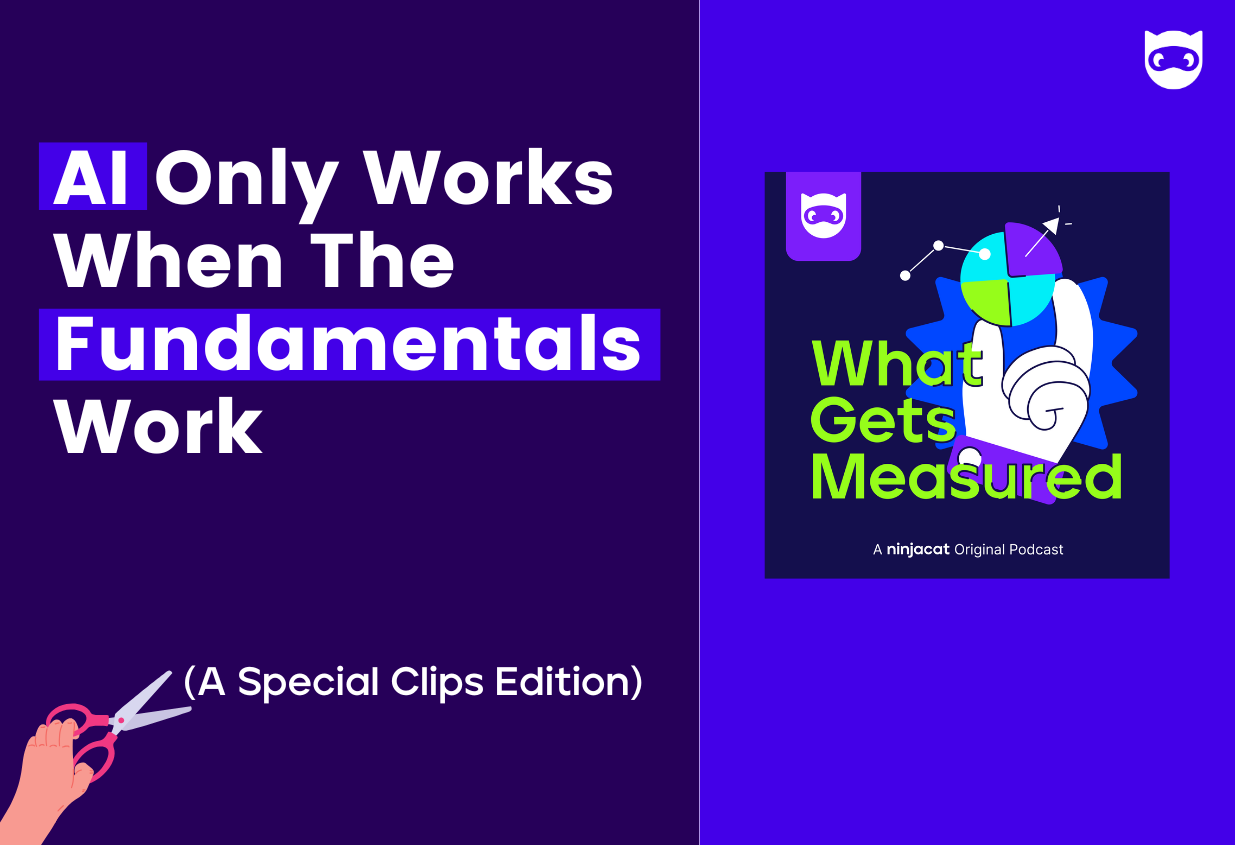Taking The Headache Out Of Performance Analytics For Agencies

Pain Points in Performance Analytics for Agencies
When it comes to improving performance analytics for advertising agencies, there first has to be a sober reckoning with the pain points associated with client reports, both agency and client-side.
The reasons agency client reporting and analytics can be a pain are myriad, but there tend to be common themes of “information parity” and “transparency” among the complaints from agencies. Here are a few:
- Clients never actually review the reports or dashboards
- Target measurements change monthly
- Lack of market research / incomplete brief
- Approvals for new campaigns stalled, leaving stale metrics
- Problems in Product/Service impacting ad performance
- No “full-funnel” visibility - agencies unsure if client-side needles are moving
However, among client-side marketers, there are also themes to the advice on ways to improve analytics from agencies:
- Know the client and their style through “joint discovery”
- Know the client’s business to be able to make good recommendations
- ROI is interesting, but what is working and why?
- Reports on their own are not useful without explanation
The best way to remove the headache out of performance analytics for agencies is to understand marketing performance data holistically, and adopt scalable habits in the way your agency approaches the client reporting process.
How to Improve Performance Analytics for Agencies
Oddly enough, the first step in improving performance analytics for agencies has little to do with data and lots to do with a solid marketing brief.

Advertising and marketing agencies are known for helping brands and businesses gain attention in crowded marketplaces.
However, it doesn’t matter how talented an agency is, if the marketing brief they’ve been given for an ad campaign is incomplete, the chances of success diminish with every missing piece of the brief, and with that, the ability to measure or report any meaningful metrics.
The marketing brief is really the only tool both client-side marketers and agencies have to ensure their advertising makes an impact.
In short, a good brief is worth a billion data points.
A Quality Marketing Brief Includes...
- Project details - Name of project, brand being promoted, timelines, deadlines, approval stages, actions, actors, and “final approver” all identified and listed.
- Proposed Budget - Critical and often left out of a brief, the budget helps set the ceiling for any creative proposal and media plan, reducing the rounds of drafts and approvals
- Product/Service details - A good brief should include not only the Unique Selling Proposition of the product/service being featured, but also any additional product benefits or insights that might help convince and convert customers.
- Commercial context - What is the external business opportunity or problem that needs to be solved? What kind of commercial history, competitive data, and information on market dynamics might help inspire a distinct and successful campaign?
- Audience Information - Who is the campaign meant for, where can they be found, and is there any information that can help persuade them to take action?
- Calls To Action - Of course, “buy now!” is always desirable, but are there more specific actions or behaviors that can help narrow down campaign effectiveness?
- Channels - Where the campaign will be seen, and assets such as, landing pages, to match these destinations.
- Single-Minded Proposition - Agencies are good for ideas, but they aren’t good mind readers. A quality brief answers this tough question; what is the one thing this campaign is meant to communicate? What is your single-minded proposition?
- Brand guidelines - Along with campaign assets, effective briefs will contain design and style guides for the brand, to help ensure synergy with brand and agency output.
- Must-Haves or Mandatories - What must be included in the campaign or project? Enumerate and underline the ‘must-haves’ in the brief, to avoid rounds of revisions.
- Measurable Results - How will the success of this campaign be measured? What audience should be considered in the report creation and annotations?
Notice that analytics and performance metrics are the final item on the list. If the previous articles of the brief go unaddressed, then the likelihood that all resultant measurements will be strategically misaligned in some way is guaranteed.
How reporting software improves agency analytics
It’s possible to run an agency without dedicated software for the client reporting process. But at a certain scale, the effort to gather and report on performance analytics supersedes the value those reports generate.
Marketing reporting software can help agencies streamline data integrations, centralize marketing data, and scale output through report automation.
Improved data integrations
Reporting software equips agencies with the ability to centrally connect, monitor, and maintain their marketing and business intelligence data.
Owning the marketing data warehouse
By connecting to a marketing data warehouse you own, reporting software generates performance reports with updated data sources you trust.
Automating client reports
With the proper blend of process and people, reporting software allows agencies the ability to templetize presentation formats and styles across hundreds of accounts to generate custom reports at scale.

High Quality Presentation-Ready Templates
Most reporting software provides read-to-use templates for presentations, helping agencies reduce the time it takes to measure and report on campaign effectiveness. Here are a few client report examples and templates from NinjaCat.

Reporting On The Analytics That Matter Most
With a crystal clear marketing brief in hand, a reporting workflow that’s connected to metrics you can trust that generates fast and reliable reports, the final step toward a pain free approach to performance analytics is to establish a framework for how to tell a story with the data.
Here are six factors to help your agency report on the analytics that matter most:
- Have a narrative arch - Effective performance reports are presented as more than just a collection of data points, but rather a selection of metrics that tell a definitive story.
- Display trends & comparisons to provide context - The level of insight or familiarity with analytics can differ drastically within audiences reviewing your report; provide context and perspective wherever possible.
- Normalize data - For technicians that work with data on a daily basis, peaks and valleys can be explained. However, when reporting to stakeholders, it’s preferred if extraneous “noise” is removed from data sets, in order to present a cleaner picture and potentially reveal longer trends.
- Know what decisions need to be made - If you understand the goals and business model of a client, selecting the analytics you include in performance reports will be clear.
- Provide analysis and recommendations - Data alone can’t tell a story. Annotations and recommendations add insight and momentum to reports.
- KISS (Keep It Simple, Stupid) - There can be a thousand data points for the modern advertising campaign, but that doesn’t mean they all have to fit in your dashboard. When in doubt, leave it out. Build performance reports to be understood by others, not to be explained by you.
Pain-Free Performance Analytics for Agencies
A good marketing brief and reliable reporting software and workflows can help in the quest to remove the pain and friction from performance analytics for agencies. But in order to stay pain-free, it’s important to remember that quality output and product is the result of reliable processes and dependable systems.
And getting the reporting workflow nailed down for an agency isn’t just to benefit clients.
When you have control and command over how you present campaign results to clients, you have an opportunity to add value in intangible ways that can establish your reports themselves as a point of distinction and differentiation.




.png)
